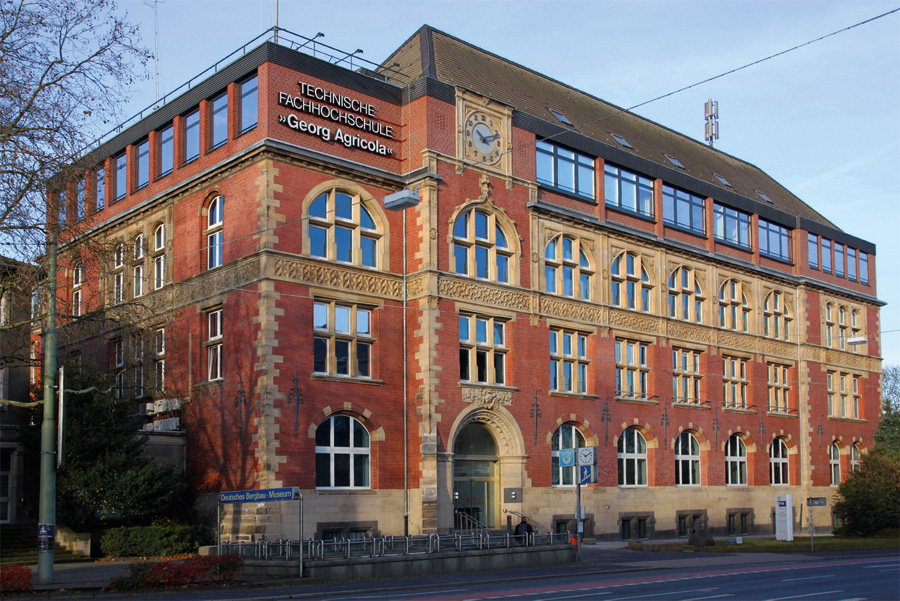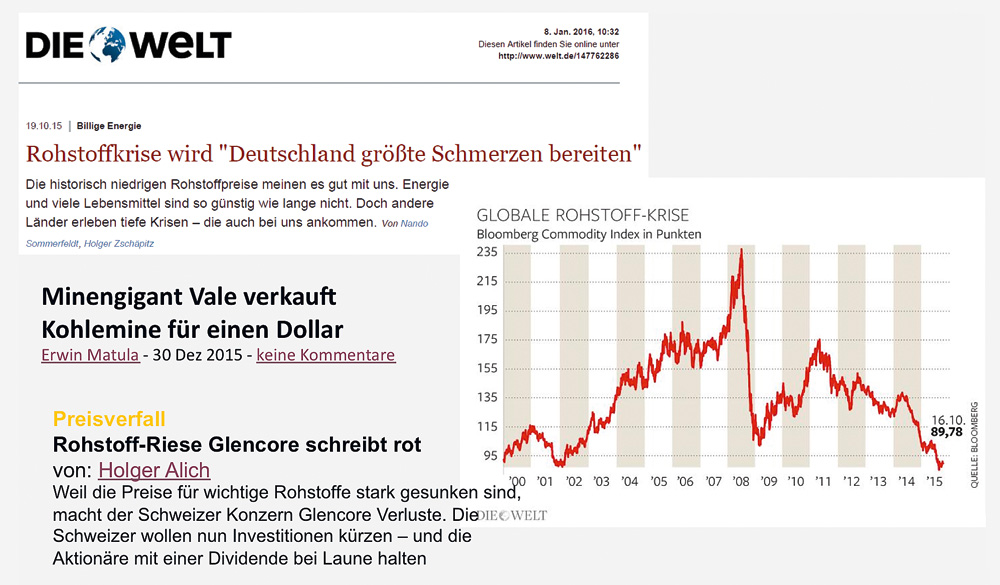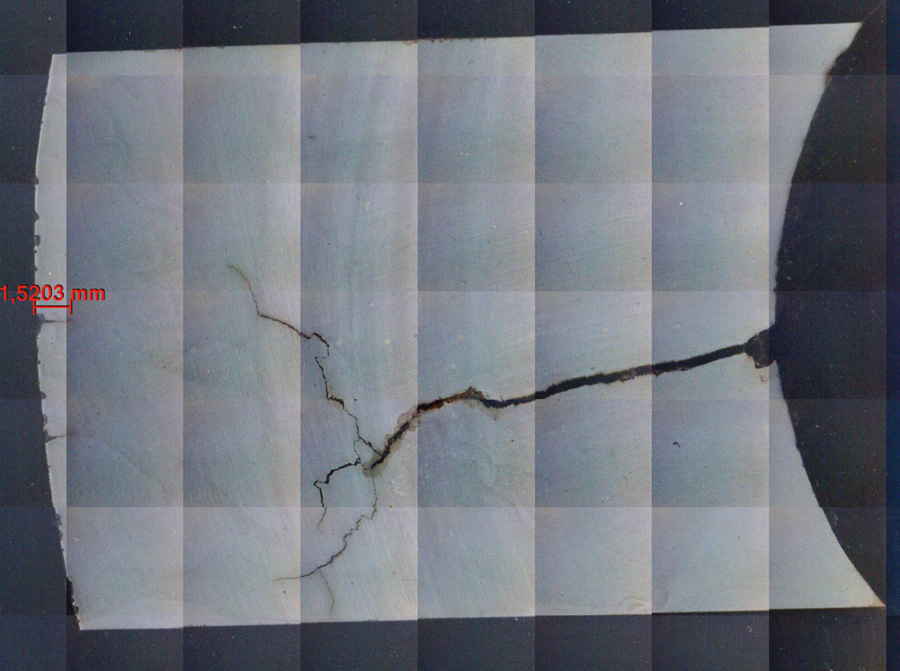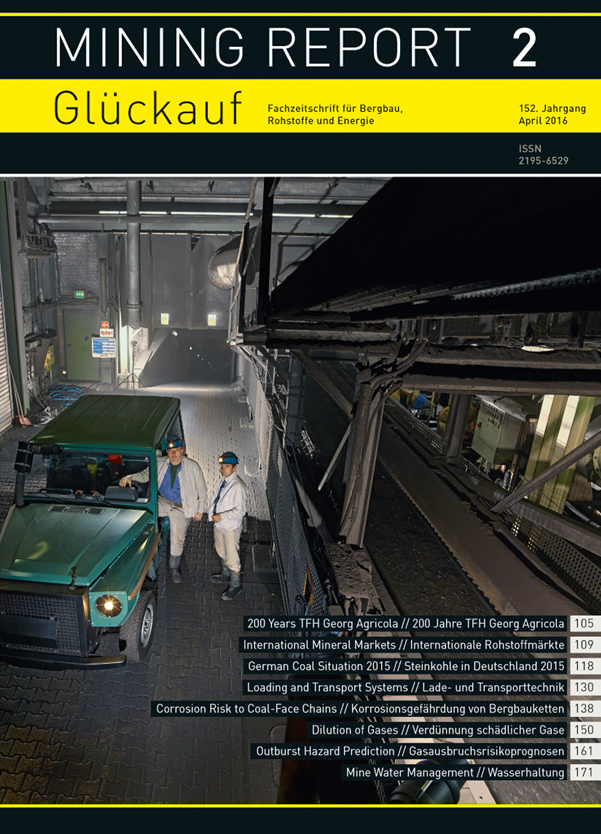Research generally relies on having its work published if it is to attract attention and have its results more widely discussed. We want to do our bit in this respect by using Mining Report Glückauf as a forum for the mining research institutes and, more particularly, for the mining universities. For this reason papers on university-based mining research can, as of now, be downloaded in full and free of charge via open access on the Mining Report Glückauf website. This facility, which will apply with retroactive effect to all papers of this kind published since the beginning of 2015 …
Read moreWith my best regards // Mit freundlichem Glückauf
Dipl.-Ing. Andreas-Peter Sitte
Chief Editor Mining Report Glückauf, Herne

Future since 1816: Celebrating 200 Years University of Applied Sciences TFH Georg Agricola

Fig. 3. The central building of TFH Georg Agricola – University of Applied Sciences in the heart of Bochum. // Bild 3. Das Hauptgebäude der Technischen Fachhochschule Georg Agricola in der Bochumer Innenstadt. Photo/Foto: Düppe, TFH
Authors: Prof. Dr. Jürgen Kretschmann, Präsident, und M. A. Stephan Düppe, Pressesprecher der Technischen Fachhochschule (TFH) Georg Agricola, Bochum
Read moreDevelopments of the International Mineral Markets Considering the Chances of German Mining and Conveying Technology

Fig. 1. Press news on minerals crisis. // Bild 1. Pressemeldungen zur Rohstoffkrise. Source/Quelle: Welt, Handelsblatt
Author: Dr.-Ing. Martin Wedig, Geschäftsführer der Fachvereinigung Auslandsbergbau und internationale Rohstoffaktivitäten (FAB), Berlin
Read moreThe German Coal Situation 2015
Following a lengthy period of almost unbroken growth the coal market was seen to undergo a slight contraction in 2015. World market prices continued to fall and in some cases reached an all-time low. In Germany there was only a slight downturn in coal consumption, which was mainly due to a period of temporary stability in supplies to the electricity production sector, though the general trend here is still downwards. The German mining industry, where the phasing-out process is still under way under socially acceptable terms, reached another key milestone with the scheduled closure of Auguste Victoria colliery at the end of 2015. Germany is now left with just two operational coal mines and the industry is now forging ahead with its plans for the post-mining era.Authors: Dipl.-Ökonom Dr. Kai van de Loo, Dezernent „Politik und Statistik“ und Dipl.-Ing. Andreas-Peter Sitte, Dezernent „Kommunikation“, Gesamtverband Steinkohle e.V. (GVSt), Herne
Read moreUnderground Loading and Transport Systems and the Challenges Posed by Increased Production Levels at Ore Mines around the World
Developments in production levels at ore mines as a result of the transition from large opencast mines to deep mining have forced mine operators and machinery manufacturers towards greater modernisation and innovation, especially when it comes to methods and technology for ore loading and transport. Large-scale opencast mines producing copper ore, such as Grasberg and Chuquicamata, employ modern, highly efficient surface mining techniques. However, as Chuquicamata and other large mines have shown, this kind of technology tends to reach its limits at working depths of more than 1,000 m and as a result any further extraction can only be carried out cost effectively by switching to deep mining methods. There are also examples where deposits at existing mines have been developed to achieve production rates similar to those of opencast operations, such as at the LKAB-owned Kiruna mine in Sweden.Author: Dipl.- Ing. Karl-Heinz Wennmohs, Mining & Rock Excavation Technique (M & R), Witten
Read moreAssessing the Corrosion Risk to Coal-Face Chains

Fig. 7. Corrosion failure at a chain link. // Bild 7. Korrosionsversagen an einem Kettenglied. Source/Quelle: THIELE
Authors: Dr.-Ing. Günther Philipp, Geschäftsführer, und Alexander Gerth, M.Sc., THIELE GmbH & Co. KG, Iserlohn
Read moreUsing a Hierarchical Approach for the Dilution of Gases
In order to ensure safe underground working conditions, especially in case of gas outbursts, it is essential to develop ventilation concepts for the necessary dilution of harmful gases with respect to the occurring gases, gas concentrations and general operational conditions as to cross-sectional areas and existing ventilation systems. Therefore, a concept for a hierarchical approach for the dilution of gases was developed, combining Computational Fluid Dynamics (CFD) and Ventilation Network modeling. For the two-phase gas/air flow that occurs during a gas burst, a CFD simulation was performed and the behavior of the gas burst and its impact on the existing ventilation were analysed. Based on the simulation, various measures for the dilution of air dependent upon the severity of the gas burst as well as the geometrical conditions were tested and evaluated according to their efficiency. An integration of the simulation results into the existing superior ventilation network calculations was then performed with the Mine Ventilation Simulation Software VentsimTM, a tool that provides compressible ventilation system calculations and is capable of delivering the requirements for the development of quick, effective and safe ventilation concepts.Authors: Dr.-Ing. Elisabeth Clausen und M.Tech. Amit Agasty, Institut für Bergbau, Technische Universität (TU) Clausthal, Clausthal-Zellerfeld
Read moreAbout Possibilities to Improve Current Outburst Hazard Prediction Based on Updated Mechanism of Coal and Gas Outburst
In this paper the problem of coal and gas outburst – the coal pit’s most complex and dangerous induced geodynamic phenomenon – occurrence and development has been considered in details. Based on the theoretical and experimental researches it has been shown that this phenomenon may occur in full strength only with sufficient quantity of total potential energy available in the massif’s face area together with the conditions required for development of each stage of the phenomenon. However, the main condition shall be occurrence and development of the intensive opening and extension of cracks quasiparallel to the seam’s exposed surface and saturation of these cracks with pressurised free gas in the face area.Updating of the coal and gas outburst process allows to improve current prediction of the mine opening hazards with respect to the coal and gas outbursts.
Authors: Prof. Dr.-Ing. Viktor Semenovich Zykov, Prof. Dr.-Ing. Hee Un Lee
Read moreOptimizing Long-term Mine Water Management of Mining Sites with the Help of Directional Drilling and Liner Technology
The exploitation of raw materials in opencast or subsurface mining is usually followed by an impact on the water balance. To guarantee a secure and efficient production process the water must be drained. The environment-friendly mine water management should be implemented during the active mining as well as in the post-mining phase. Moreover, abandoned mine sites are often marked by unsolved hydrogeological questions.This article deals with a number of options to optimize the mine and geothermal water management on the basis of liner technology. This proven technology can be adapted on the specific hydrochemistry, on the construction form and the conditions of the given infrastructure. Also in combination with directional drilling and horizontal or inclined bore holes, the liner technology can be used.
Authors: Prof. Dr.-Ing. Peter Goerke-Mallet, Forschungszentrum Nachbergbau der Technischen Fachhochschule (TFH) Georg Agricola, Bochum, Frank Mersmann, SAERTEX multicom GmbH, Saerbeck, Thorsten Beermann, Beermann Bohrtechnik GmbH, Hörstel-Riesenbeck, Dr.-Ing. Max Thomas Stöttner, Hochschule Osnabrück, Osnabrück
Read more














